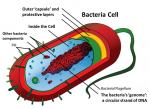|
This section contains 840 words (approx. 3 pages at 300 words per page) |

|
Swimming advisories are warnings to the public that contact with beach water could cause an illness. Advisories may be issued after water monitoring, testing that reveals potentially harmful bacteria levels. Water monitoring assesses levels of E. coli and fecal coliform contamination in recreational waters. Local authorities restrict use of water for recreational activities when the bacteria level exceeds standards for safe usage.
A beach may be closed when the level of water contamination poses a definite health risk. Mildly polluted water can cause conditions such as a headache, sore throat, or vomiting. Highly polluted water can cause hepatitis, cholera, and typhoid fever.
Swimming advisories are usually issued by governmental agencies and apply to public beaches at the ocean and waterways such as bays, lakes, and rivers. Advisories may be issued for public pools, too. However, not all states had programs to monitor water quality and issue...
|
This section contains 840 words (approx. 3 pages at 300 words per page) |

|


